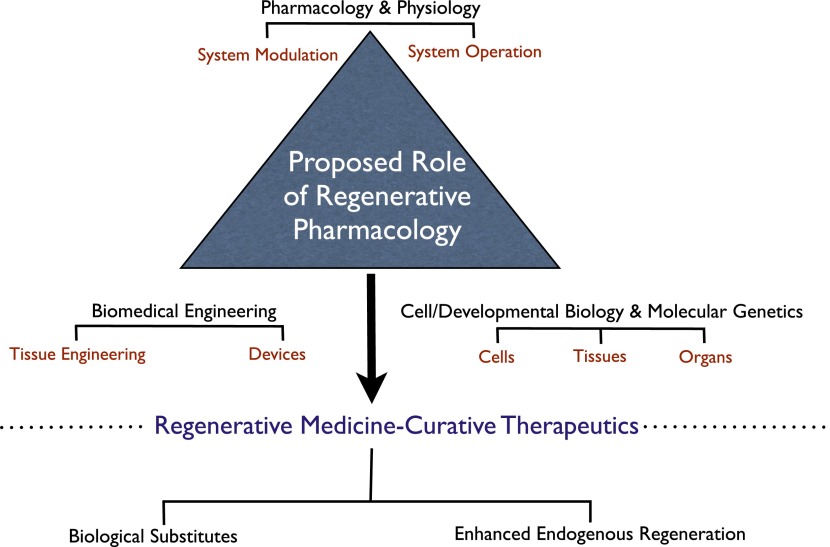Fig. 1.
Central role of regenerative pharmacology in the development of regenerative medicine technologies and curative therapies. The schematic depicts regenerative pharmacology at the intersection of the classic scientific disciplines traditionally associated with regenerative medicine. Knowledge of biologic system operation (i.e., physiology) leads naturally to system modulation (i.e., pharmacology). This connection underpins traditional small molecule drug therapy, which seeks primarily to ameliorate pathologic symptoms arising from aging and disease. Regenerative pharmacology encompasses a distinct paradigm in that novel technologies arise from contributions to the traditional physiology-pharmacology axis provided by 1) biomedical engineering and 2) an understanding of normal cell and developmental biology and molecular genetics. The synergistic interaction of these disciplines enables the creation of novel technologies to enhance regeneration in vivo or to enable de novo tissue and organ engineering (production of “biological substitutes”) in vitro. The central goal of regenerative pharmacology is to develop potentially curative therapeutics. In this endeavor engineered biologic constructs may serve several purposes. First, they provide tools to determine the etiology of degenerative tissue and organ dysfunction and to identify novel therapeutics. The ability to produce individualized constructs, enabled by induced pluripotent stem cells, will move this approach into the realm of personalized medicine. Advances in miniaturization and the adaptation of engineered biologic systems created by regenerative medicine technologies to high-throughput platforms (i.e., “organs on a chip”) also may usher in a new age in drug development. Finally, the engineered biologic substitutes themselves may serve as therapeutics, capable of reconstituting normal tissue and organ functions when implanted into patients.

